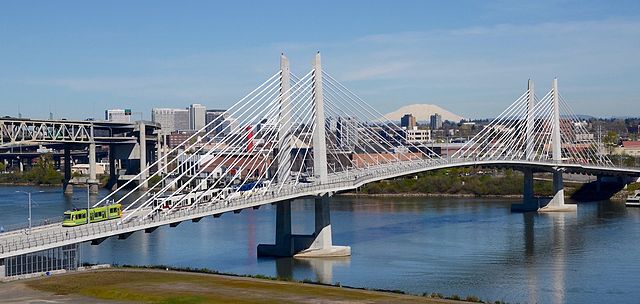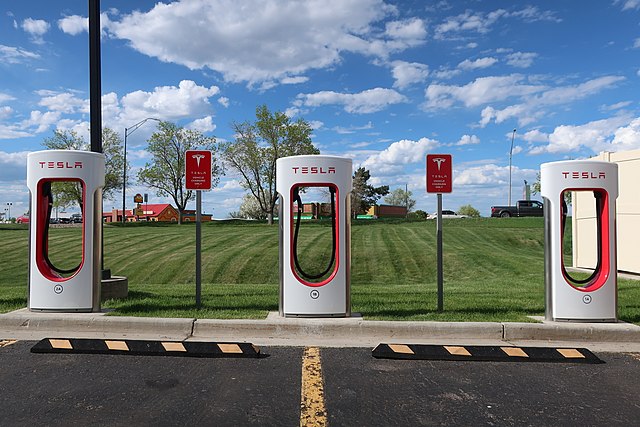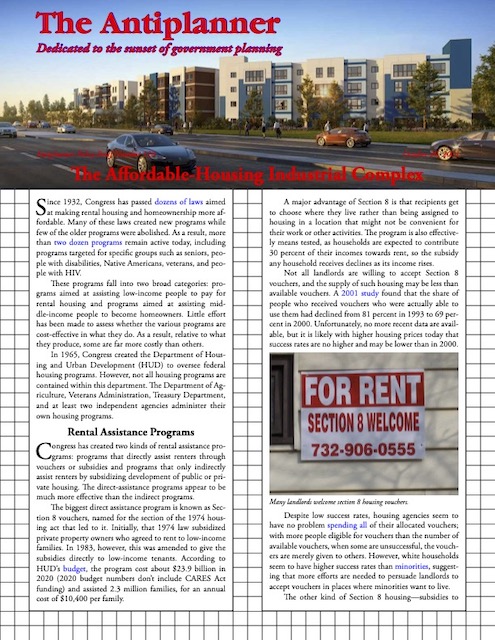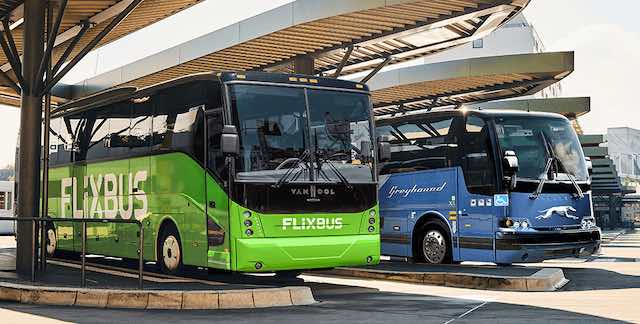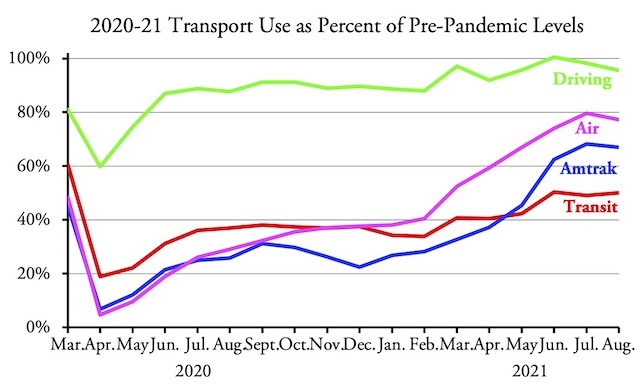About 20,160 people died in traffic accidents in the first half of 2021, according to an early estimate released last week by the National Highway Traffic Safety Administration (NHTSA). This puts this year on track to being the first since 2007 to have more than 40,000 annual fatalities.
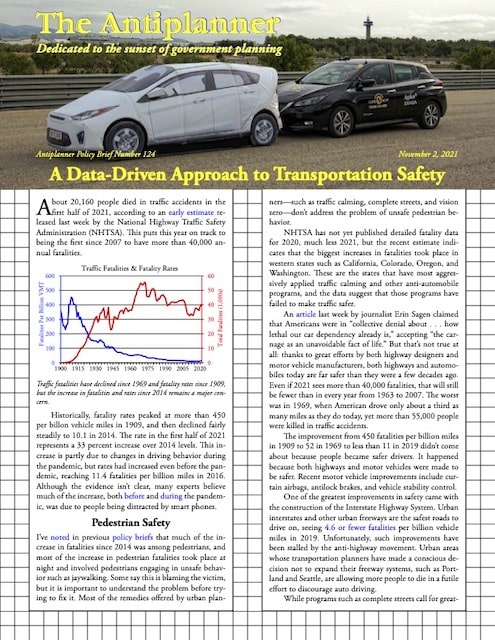 Click image to download a four-page PDF of this policy brief.
Click image to download a four-page PDF of this policy brief.
Historically, fatality rates peaked at more than 450 per billon vehicle miles in 1909, and then declined fairly steadily to 10.1 in 2014. The 2021 rate of 13.4 represents a 33 percent increase over 2014 levels. This increase is partly due to changes in driving behavior during the pandemic, but rates had increased even before the pandemic, reaching 11.4 fatalities per billion miles in 2016. Although the evidence isn’t clear, many experts believe much of the increase, both before and during the pandemic, was due to people being distracted by smart phones. Continue reading


